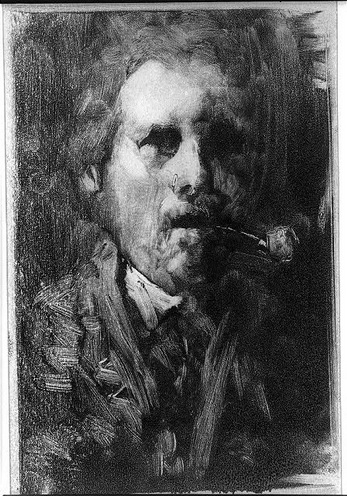 |
Otto Henry Bacher | |
| Birth Date: May 31, 1856 |
||
| Death Date: August 16, 1909 Artist Gallery |
||
| Born to a German family in Cleveland, Ohio, in 1856, the painter and engraver Otto Henry Bacher rose to international acclaim for his innovative engravings, particularly those depicting scenes from Venice and Germany.
Beginning as a student of local artist DeScott Evans, Bacher went on to study in Philadelphia and Cleveland under artists Willis Seaver Adams and eventually Sion Longley Wenban, who taught Bacher the etching and landscape painting that would characterize his career. In 1878, traveling with the latter two artists, Bacher went to Europe, studying at Munich’s Royal Academy before joining the circle of artist Frank Duveneck in both Munich, Florence, and Venice. While in Venice, Bacher worked with and studied under James Abbott McNeill Whistler, refining his etching and painting style based on this experience. Bacher’s works were not only well received by the public and critics but during his time in Venice he taught many members of Duveneck’s school how to etch, producing in the process some of the first American monotype prints.
Returning from Europe in 1883, Otto Bacher split his time between teaching in Cleveland and Richfield, and working at his Bronxville, New York studio, finally relocating to Bronxville permanently. Though famous for his atmospheric etchings of Europe, Bacher’s later style took on a much more Impressionistic tone as he began to focus more upon portraits and landscapes executed in oil. This new style was well accepted in New York and he exhibited frequently at the Society of American Artists and National Academy of Design in that city during the last decades of his career.
He was well regarded as a central figure in American art at the time of his death—numerous museums held his works and he received multiple awards at international expositions as a member of esteemed artistic societies—for his 1908 memoir “Whistler in Venice,” but especially for his art which one contemporary praised as “an extraordinary mastery of the technique … joined [with] a love of truth and an intolerance of affectation that made him one of the most individualistic of painters.”
|
||


